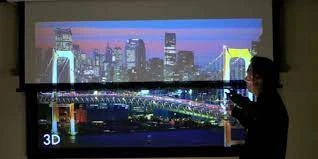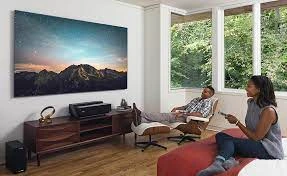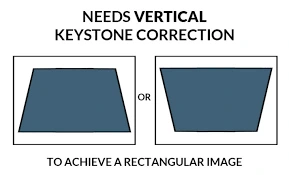Black vs White Projector Screens: Which is Right for You?
Introduction
When it comes to setting up a home theater or a presentation room, choosing the right projector screen is crucial. The color of the screen plays a significant role in the overall visual experience. Two popular options that often create a debate among enthusiasts are black and white projector screens. In this article, we will explore the characteristics, benefits, and considerations of both black and white projector screens. By the end, you will have a clear understanding of which option suits your needs the best.
Understanding Black Projector Screens
A black projector screen is designed to absorb ambient light rather than reflect it. The dark surface enhances contrast and reduces the visibility of any stray light. This results in deeper black levels and improved color saturation, leading to a more immersive viewing experience. However, it’s important to note that black screens work best in controlled environments with minimal ambient light. In well-lit rooms, black screens may not perform as well, as they can make the image appear dimmer.
Exploring White Projector Screens
White projector screens are the traditional choice for most setups. They are known for their versatility and ability to deliver bright and vibrant images. White screens reflect light evenly, ensuring that every corner of the image appears uniformly illuminated. They are ideal for rooms with ambient light as they maintain excellent visibility even in brighter conditions. However, the drawback of white screens is that they can compromise contrast and black levels, resulting in slightly washed-out colors, especially in darker scenes.
Contrast and Color Accuracy
When it comes to contrast and color accuracy, black projector screens have an edge over white screens. The black surface absorbs light, preventing it from bouncing back and reducing reflections. This leads to improved contrast ratios, making blacks appear deeper and colors more vibrant. On the other hand, white screens tend to reflect light, which can wash out colors and reduce overall contrast. If you prioritize accurate colors and high contrast, a black projector screen is the better choice.
Ambient Light Considerations
If your viewing environment has a significant amount of ambient light, a white projector screen is the way to go. The reflective properties of white screens ensure that the projected image remains bright and visible, even in well-lit conditions. Black screens, on the other hand, are more suitable for dedicated home theater setups where you have complete control over the lighting conditions. In rooms with moderate to high ambient light, black screens may result in a loss of image brightness.
Viewing Angle and Uniformity
Another factor to consider is the viewing angle and screen uniformity. White projector screens provide a wider viewing angle, allowing the audience to enjoy a clear picture from various positions in the room. They also maintain uniform brightness across the entire surface, ensuring a consistent viewing experience for everyone. Black screens, however, can have narrower viewing angles and may require the viewer to be in the central position for optimal image quality. Additionally, black screens may exhibit hotspotting, where the center of the image appears brighter than the edges.
Installation and Maintenance
Both black and white projector screens are relatively easy to install and maintain. They are available in various sizes and formats to accommodate different room sizes and projector types. When it comes to cleaning, white screens may require more frequent maintenance as dust and dirt are more visible on their bright surface. Black screens are more forgiving in this regard, as they tend to hide dust particles and smudges more effectively.
Pricing and Availability
In terms of pricing, white projector screens are generally more affordable and widely available. They are the standard choice for most setups and come in a wide range of price points to suit different budgets. Black projector screens, on the other hand, are often considered a premium option and can be more expensive. Additionally, the availability of black screens may be limited compared to white screens, especially in certain regions.
Black vs White: Pros and Cons
To summarize, let’s take a look at the pros and cons of black and white projector screens:
Black Projector Screens:
- Pros: Enhanced contrast, improved color saturation, ideal for controlled environments.
- Cons: Dimmer image in well-lit rooms, narrower viewing angles, potential hotspotting.
White Projector Screens:
- Pros: Versatile, bright and vibrant images, suitable for rooms with ambient light, wider viewing angles, consistent brightness.
- Cons: Compromised contrast and black levels, slightly washed-out colors in darker scenes.
Factors to Consider Before Making a Choice
To make an informed decision, consider the following factors:
- Room Environment: Assess the lighting conditions and the level of control you have over ambient light in the room.
- Visual Priorities: Determine whether you prioritize accurate colors and high contrast or overall brightness and visibility.
- Viewing Positions: Consider the seating arrangement and whether the audience will be spread across the room or primarily in the central position.
- Budget and Availability: Take into account your budget and the availability of different screen options in your region.
Conclusion
Choosing between black and white projector screens ultimately depends on your specific requirements and preferences. If you value high contrast and color accuracy in a controlled environment, a black screen will deliver exceptional results. On the other hand, if you need versatility and brightness in a room with ambient light, a white screen is the way to go. Assess your room conditions, visual priorities, and budget to make an informed decision that enhances your viewing experience.







